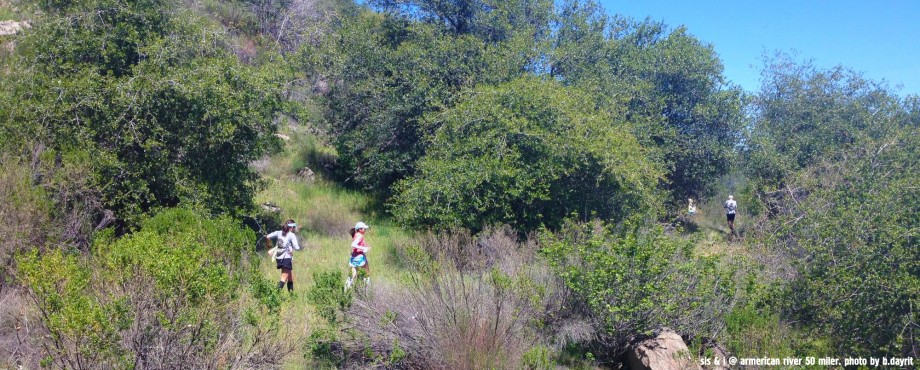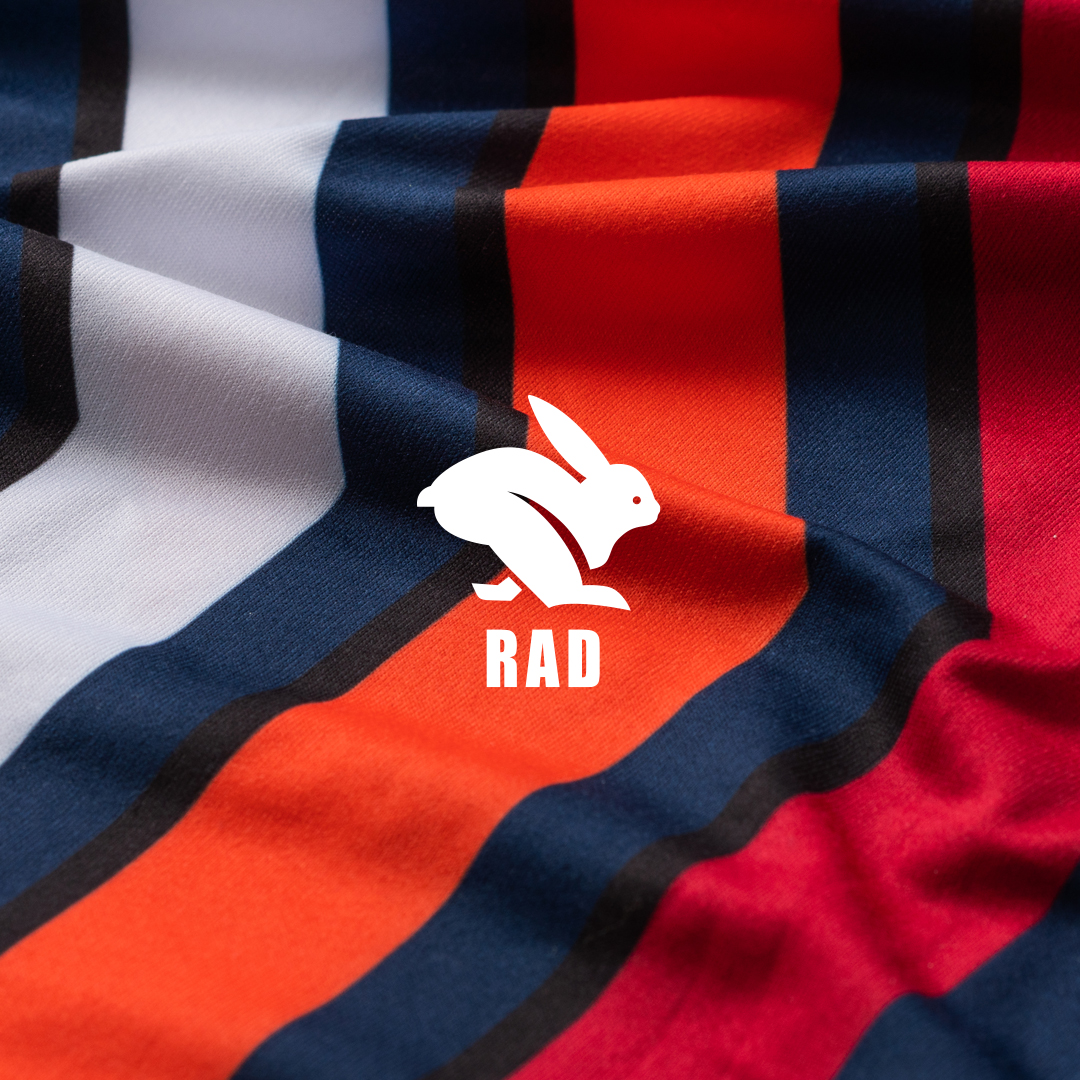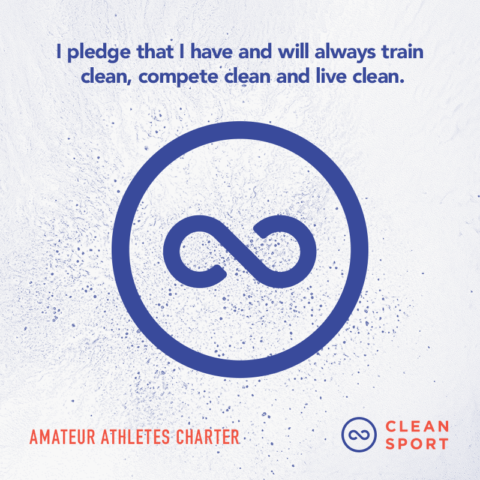Barkley Fall Classic: An Odyssey of Endurance
Driven by relentless curiosity and a thirst for adventure, I found myself drawn to the infamous Barkley Marathons, a topic often whispered about among the ultra-running community. Each documentary and video I watched showcased participants navigating challenging terrains, embodying the epitome of human grit. Only a handful of runners, fewer than 20, have ever completed the Barkley Marathon.
The race director, Laz, who playfully designs tough courses at Frozen Head State Park, became impossible to ignore. The Barkley Marathons isn’t just a race; it’s a profound challenge to one’s endurance and spirit, testing the limits of what runners can endure. However, I must clarify, this extreme race was not the one I participated in, as it was beyond my current abilities.
During an unforgettable experience at the Rocky 100, I encountered Nancy, a local legend among Texas trail runners, who shared tales of her participation in the “Baby Barkley,” officially known as the Barkley Fall Classic (BFC), a 50K race and little brother of the beast called The Barkley Marathons. My California friend Sommer had mentioned it previously as well. It seemed like the universe was nudging me toward this adventure.
Despite reservations, an opportunity presented itself: an email invitation to the upcoming BFC, merely six weeks away. Though I could have declined to prepare more adequately for the following year, the allure was irresistible.
Training and Preparations: I had a training foundation but lacked experience with mountains, a significant component absent in Central Texas. I did several hill repeats on a local hill in Mt. Lakeway, which helped build my climbing legs. Under the relentless Texan sun, I trained diligently on both road and trails, while focusing on nutritional preparation, incorporating liquid calories (Tailwind), energy food (Picky Bars, Spring Energy), and recovery aids (BASE salt and supplements) to support my efforts.
Final Countdown: The days leading to the race were hectic: a flight to Atlanta, a work commitment, a drive to Wartburg with a meal stop in Chattanooga. The eve of the race included packet pick-up, then a scouting mission, aided by my spirited friend, Sommer. Maps sprawled out, we made our best calculations, as we ate some grub at the distillery by the old prison.

Packet pick-up and meeting Laz for the first time. Quite a celebrity, he is.
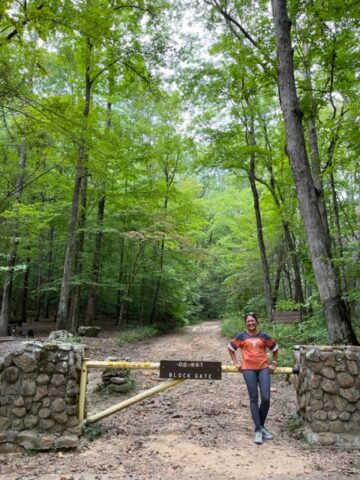
Scouting the course, posing at the yellow gate.
Race Day: On race day, a mix of emotions swirled within as dawn broke. Sleep was scarce, and anxiety was palpable, but determination grew with each step toward the starting line. When Laz lit his customary cigarette, the race started.
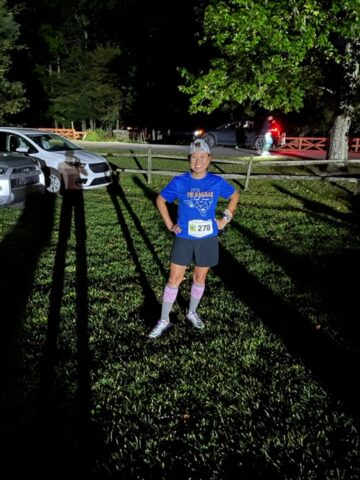
The trail seemed to have a life of its own, segmented into color-coded challenges. In the Purple section, I started conservatively, meeting fellow runners, each immersed in their personal journey. While I excelled during ascents, descents were more challenging. At one point, an encounter with yellow jackets resulted in a sting, quickly mitigated with sting/bug relief wipes I carried with me in my pack.
Below race pictures taken at the yellow gate, where this adorable puppy welcomed me with a wagging tail, capturing my joyful expression. Photos by Misty Herron.
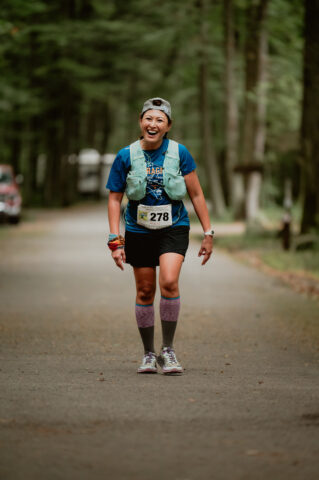
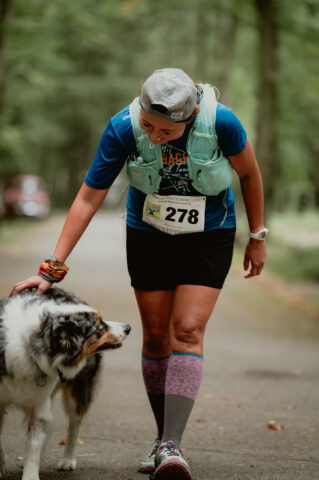
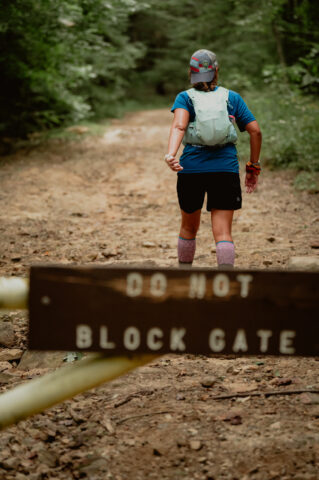
In the white segment, the race’s crux, fog and rain enveloped Chimney Top, where I and another participant and park regular, Brian, navigated through challenging ‘Laz miles’ and cold conditions.
Reaching Tub Spring’s aid station was a relief. However, the notorious Rat Jaw awaited, its treacherous slopes and thorny briars making every downward slide a small victory. Alongside Jessica, a fellow participant I met on the way, we navigated down, sharing laughs and struggles.
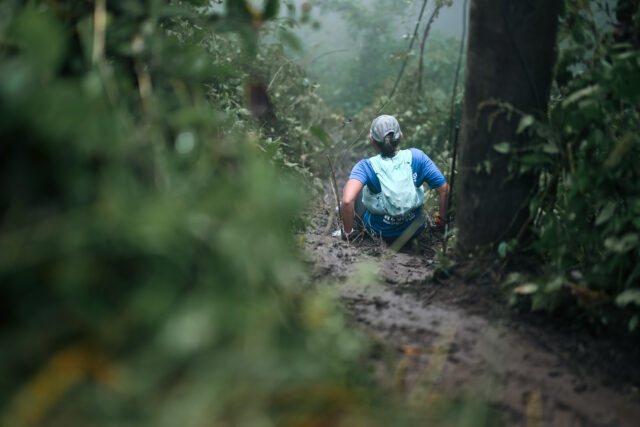
Sliding down rat jaw. Photo by Jennifer Thorsen.
Our ordeal ended at an abandoned prison, a symbol of potential defeat. Yet, there was no hint of regret, only an overwhelming sense of accomplishment and camaraderie. We waited at the bottom, and I was also glad to see Sommer completing her marathon distance.

With my new friend, Jessica, who stayed with me as we tackled the mudslide at rat jaw

Sommer finished her marathon distance.
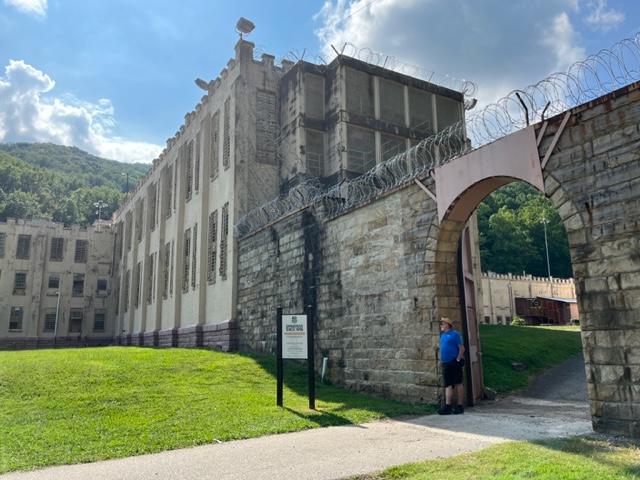
Prison – from our scouting mission the day before the race
Reflection: Looking back, the Barkley Fall Classic was more than just a race; it was a learning experience, a celebration of human potential, and a humbling adventure. Each bruise, every torn clothing, every ‘rat bite’ (cuts from the briars), now feels like a badge of honor. Ultimately, races like these aren’t about how fast you go, but how much you grow.
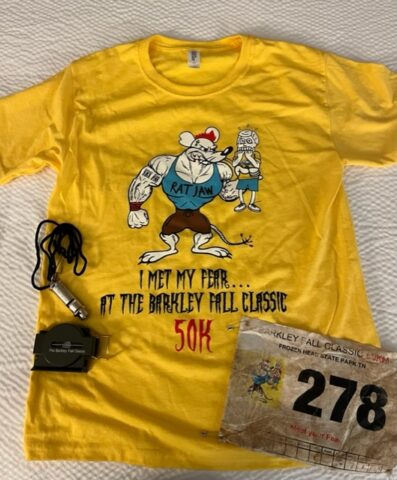
Swag, minus the cloth course map
For next time: (Wait, is there a next time? Yes, I will try until I get a finish – even if a marathon finish)
Training needs to involve more of the following:
- Hill repeats (more than what I have done)
- Speed training (I will need to run the flats)
- Strength, core, and weights training (I did some, but could use more)
Heat training worked, the altitude didn’t bother me, but it affected the other Texan runner I met (from East Texas).
Nutrition is key – this worked out well for me, as I properly planned my nutrition, carrying all that I need, since aid stations are sparse.
People will think 13 hours and 20 minutes is plenty of time to finish a 50k – it is not. Do not underestimate this course. Is it 50k? Or is it 50 miles…. We just don’t know…
By The Numbers
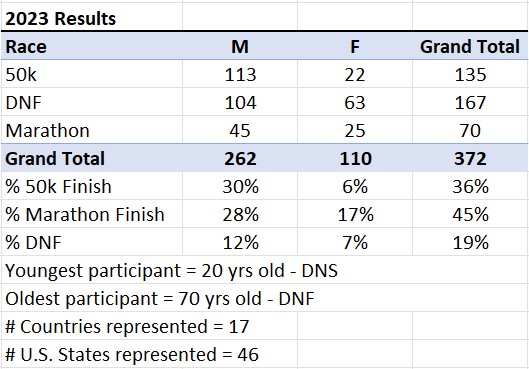
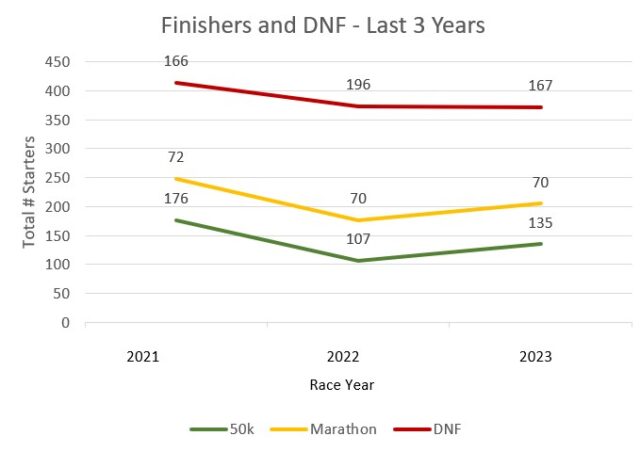
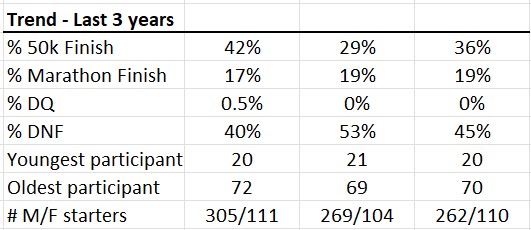
More Pictures:
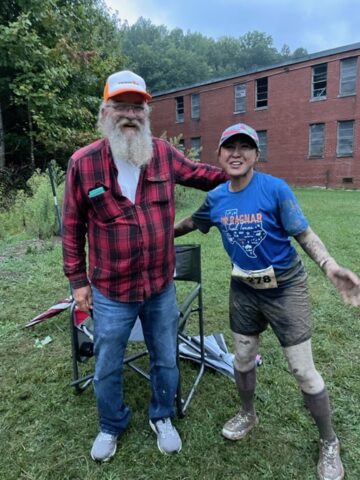
After I timed out
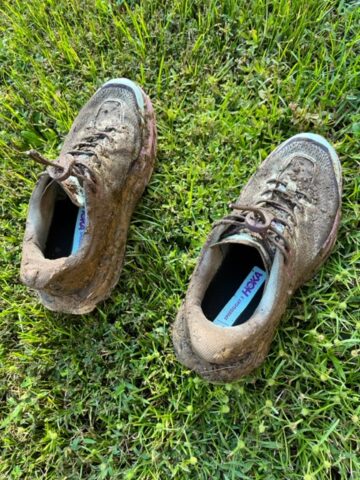
Muddy shoes!
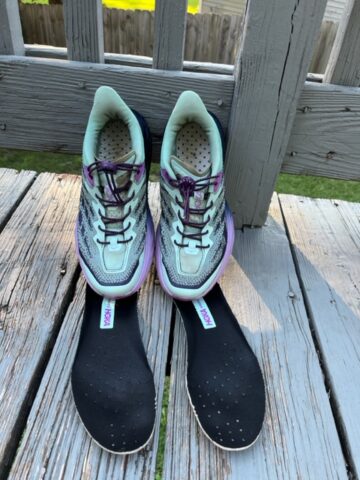
… that got cleaned fast

rat bites, I mean, cuts and slashes from briars
Full disclosure, and this is also for me to note: I wrote my full race report for BFC, then ran it thru ChatGPT to polish it and make it more interesting. The result is the above post. I prompted it to keep it to my tone, but add some imagery and color, without overexaggerating the story.

